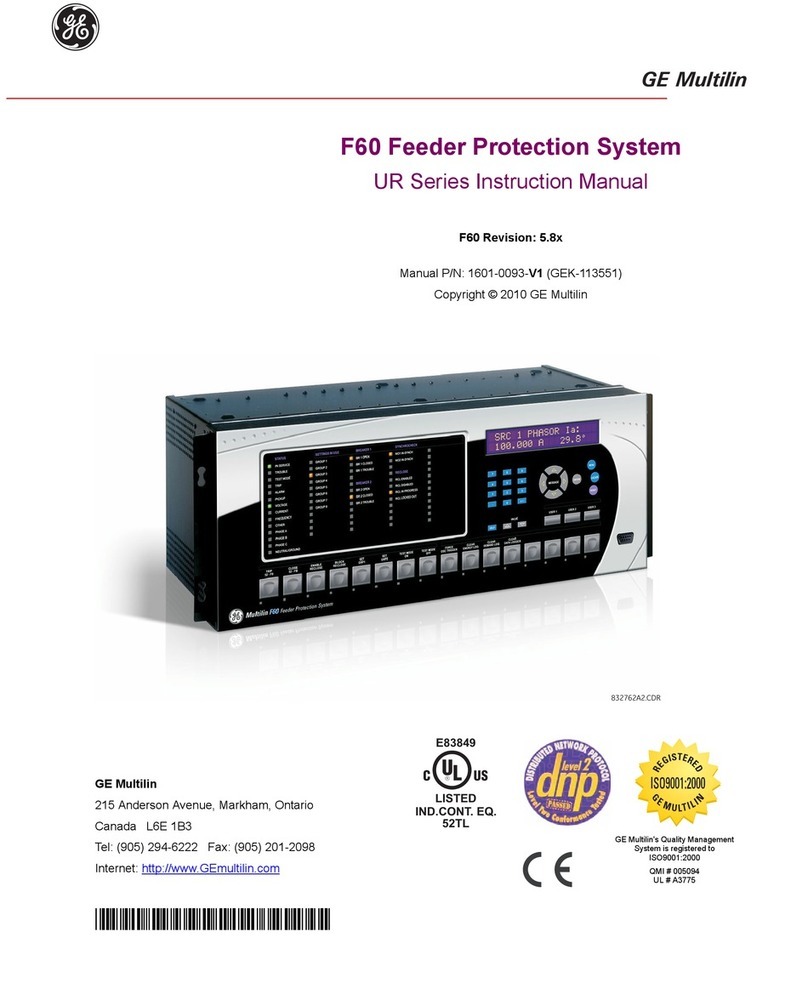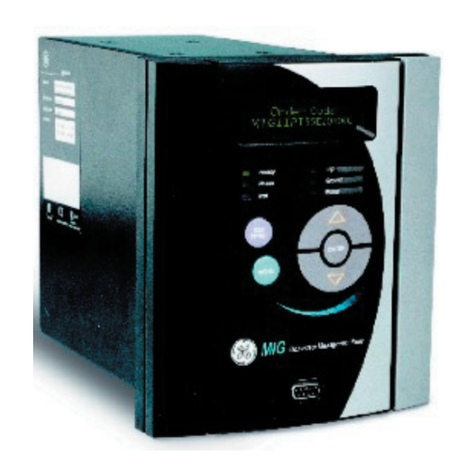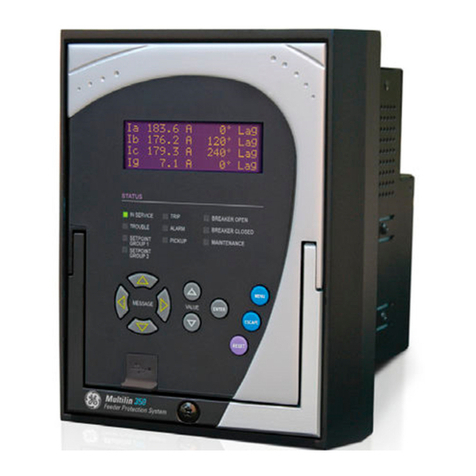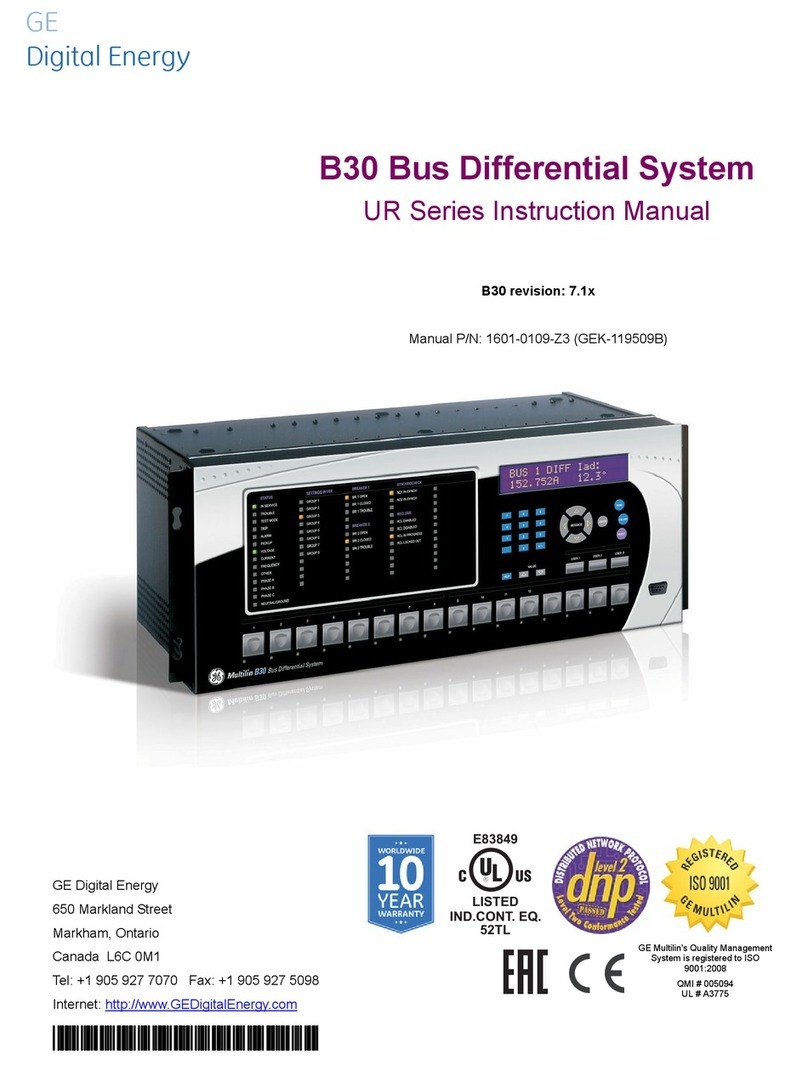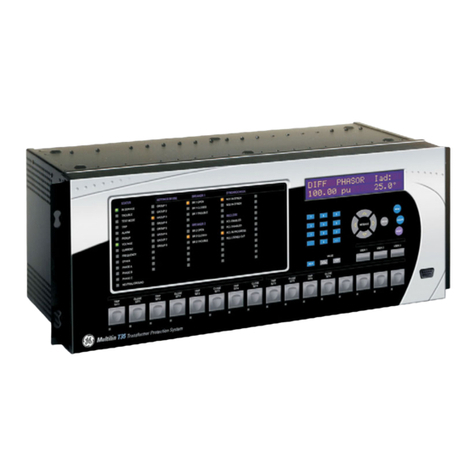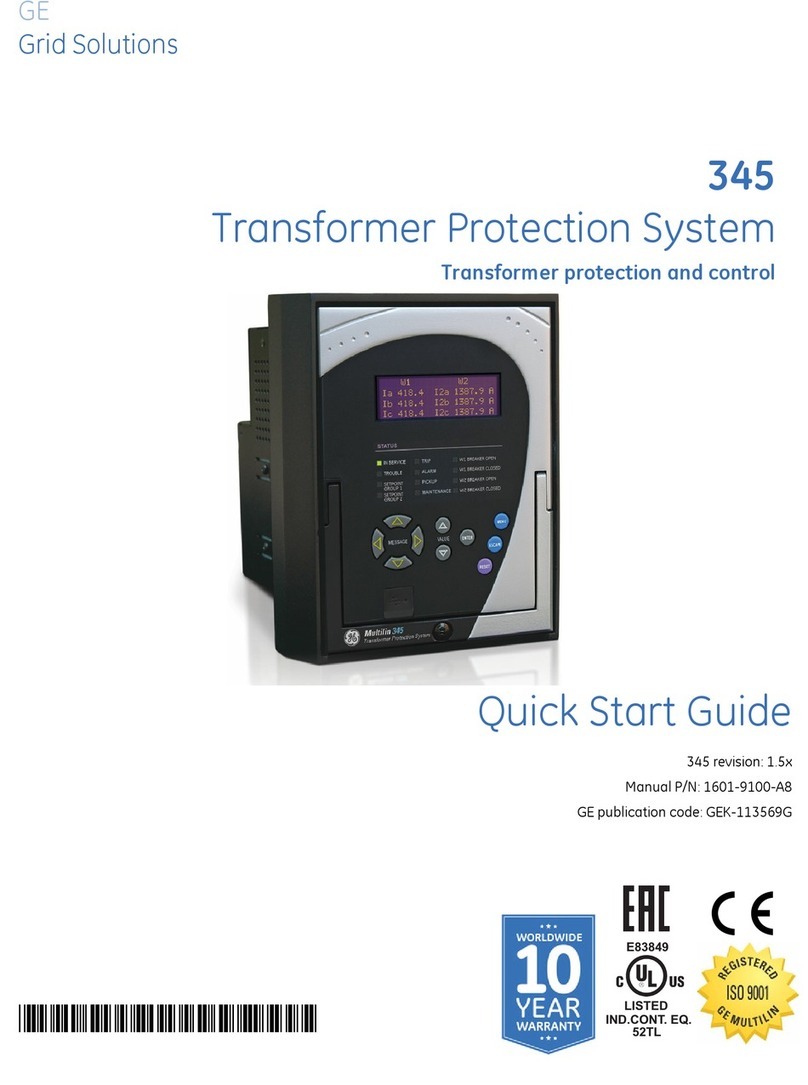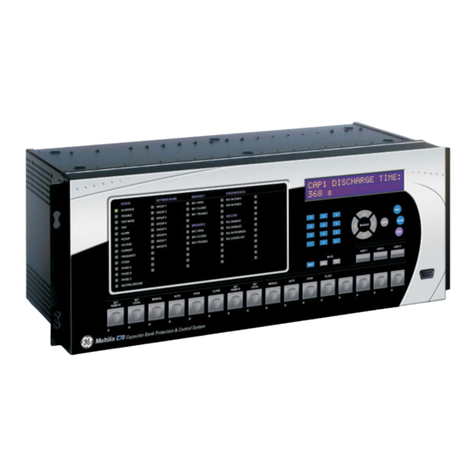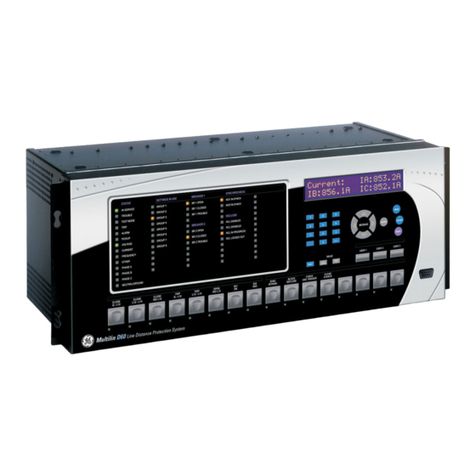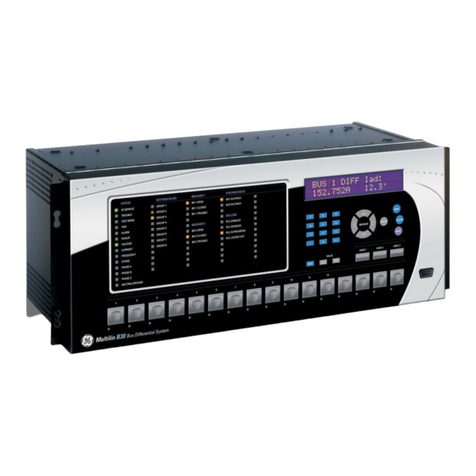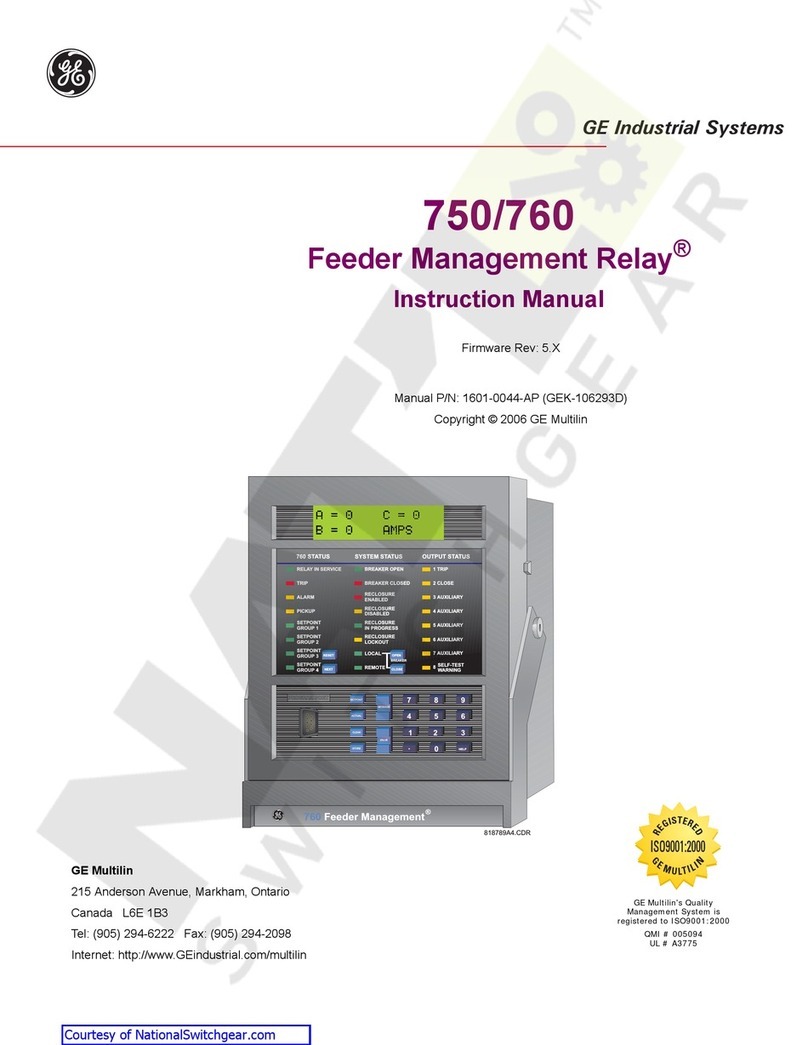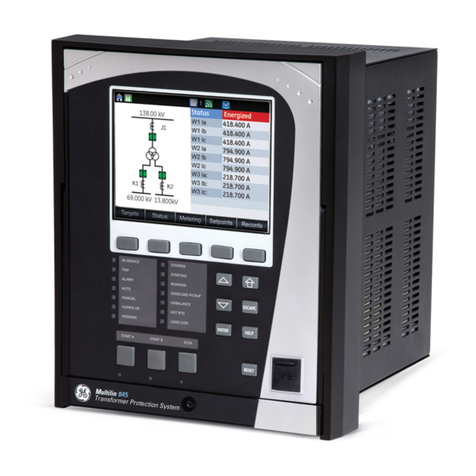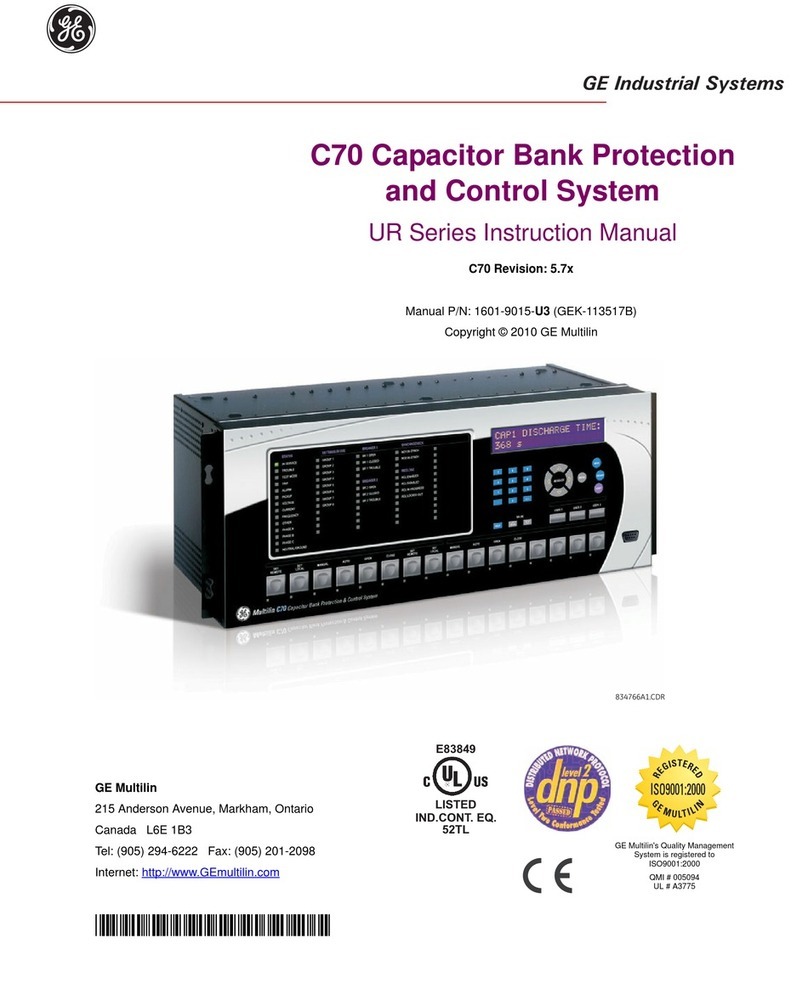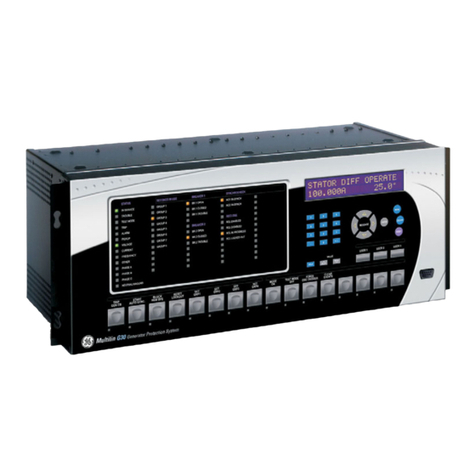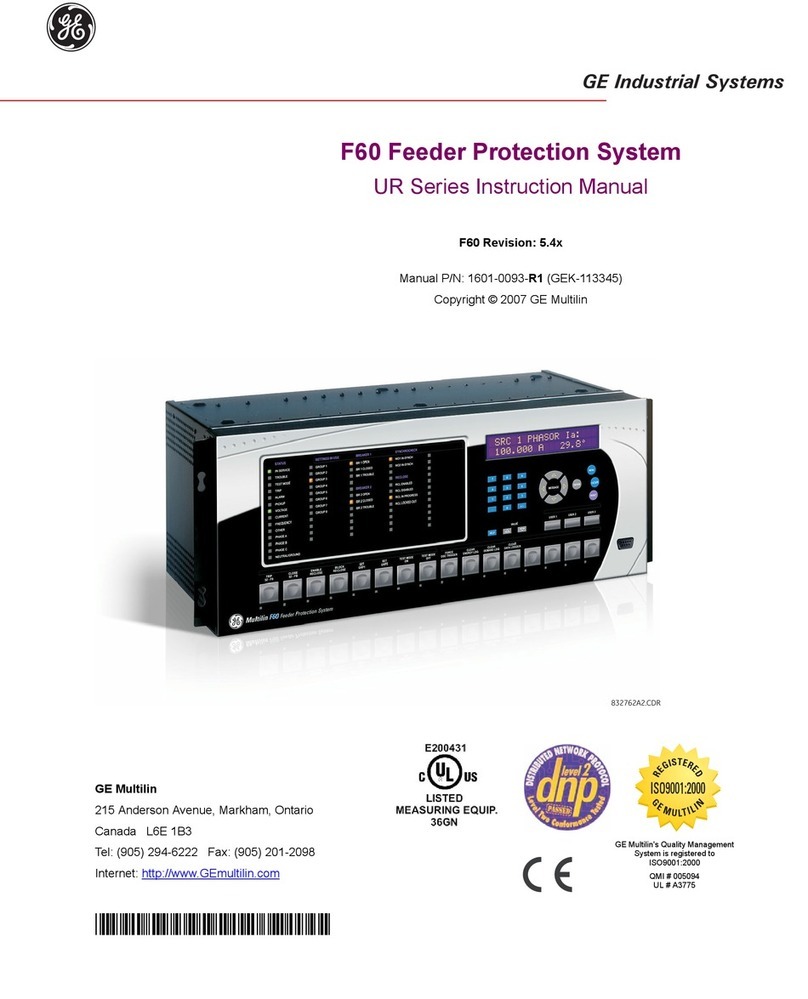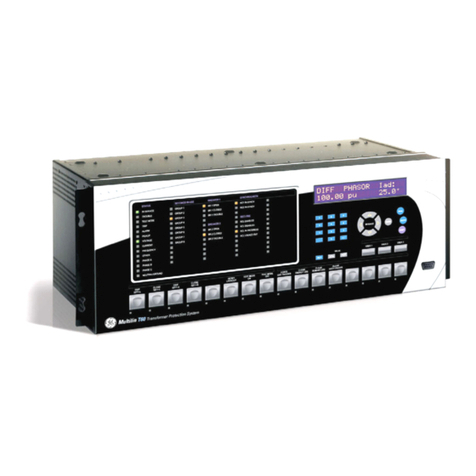
vi C60 BREAKER PROTECTION SYSTEM – INSTRUCTION MANUAL
TABLE OF CONTENTS
5.6.3 FlexLogic evaluation...................................................................................................... 5-180
5.6.4 FlexLogic example..........................................................................................................5-180
5.6.5 FlexLogic equation editor............................................................................................ 5-185
5.6.6 FlexLogic timers............................................................................................................... 5-185
5.6.7 FlexElements ..................................................................................................................... 5-185
5.6.8 Non-volatile latches.......................................................................................................5-190
5.7 Grouped elements .......................................................................................5-191
5.7.1 Overview ............................................................................................................................. 5-191
5.7.2 Setting group 1................................................................................................................. 5-191
5.7.3 Phase current ................................................................................................................... 5-192
5.7.4 Neutral current................................................................................................................. 5-201
5.7.5 Ground current ................................................................................................................ 5-205
5.7.6 Breaker failure (ANSI 50BF)......................................................................................... 5-208
5.7.7 Voltage elements ............................................................................................................ 5-219
5.7.8 Sensitive directional power (ANSI 32).................................................................... 5-225
5.8 Control elements .........................................................................................5-228
5.8.1 Overview ............................................................................................................................. 5-228
5.8.2 Trip bus ................................................................................................................................ 5-228
5.8.3 Setting groups .................................................................................................................. 5-230
5.8.4 Selector switch................................................................................................................. 5-232
5.8.5 Trip output.......................................................................................................................... 5-238
5.8.6 Overfrequency (ANSI 81O) .......................................................................................... 5-244
5.8.7 Synchrocheck (ANSI 25) ............................................................................................... 5-245
5.8.8 Digital elements............................................................................................................... 5-250
5.8.9 Digital counters................................................................................................................ 5-253
5.8.10 Monitoring elements ..................................................................................................... 5-255
5.8.11 Autoreclose (ANSI 79).................................................................................................... 5-273
5.9 Inputs/outputs .............................................................................................5-287
5.9.1 Contact inputs.................................................................................................................. 5-287
5.9.2 Virtual inputs..................................................................................................................... 5-289
5.9.3 Contact outputs............................................................................................................... 5-290
5.9.4 Virtual outputs.................................................................................................................. 5-293
5.9.5 Resetting ............................................................................................................................. 5-293
5.9.6 Direct inputs and outputs ........................................................................................... 5-294
5.9.7 Teleprotection inputs and outputs ......................................................................... 5-297
5.10 Transducer inputs/outputs........................................................................5-299
5.10.1 DCmA inputs...................................................................................................................... 5-299
5.10.2 RTD inputs .......................................................................................................................... 5-300
5.10.3 DCmA outputs .................................................................................................................. 5-301
5.11 Testing ...........................................................................................................5-305
5.11.1 Test mode function ........................................................................................................5-305
5.11.2 Test mode forcing........................................................................................................... 5-305
5.11.3 Phasor measurement unit test values.................................................................. 5-306
5.11.4 Force contact inputs ..................................................................................................... 5-307
5.11.5 Force contact outputs .................................................................................................. 5-307
6 ACTUAL VALUES 6.1 Actual Values menu.........................................................................................6-1
6.2 Front panel........................................................................................................6-3
6.3 Status................................................................................................................. 6-4
6.3.1 Contact inputs........................................................................................................................6-4
6.3.2 Virtual inputs...........................................................................................................................6-4
6.3.3 RxGOOSE boolean inputs ..................................................................................................6-4
6.3.4 RxGOOSE DPS inputs...........................................................................................................6-4
6.3.5 Teleprotection inputs ..........................................................................................................6-5
6.3.6 Contact outputs.....................................................................................................................6-5






